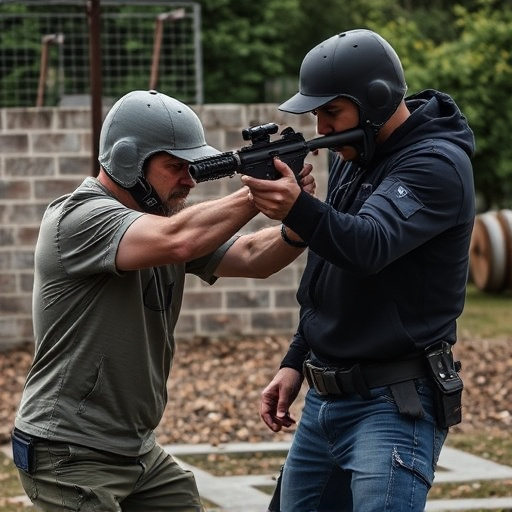Understanding voltage penetration through fabrics is crucial when using bulk stun guns in retail stores. Different clothing materials affect electric current flow, impacting shock protection or amplification. Factors like fabric thickness, conductivity, and material resistance determine voltage transmission. Bulk stun guns should be chosen based on energy output, range, and features like LED lights and alarms for effective deterrence. Retailers must prioritize safety by strategically placing devices, training staff, and complying with local laws to ensure a secure shopping experience.
Voltage penetration through thick clothing is a critical safety consideration, especially with the prevalence of bulk stun guns designed for personal protection. Understanding how voltage behaves and its interaction with diverse materials offers insights into the effectiveness of these devices. This article explores the science behind voltage penetration, delving into the role of clothing thickness as either a barrier or a conductive path. It also examines bulk stun gun design, retail store safety protocols, and compliance regulations, providing essential guidance for businesses selling such products.
- Understanding Voltage and Its Behavior
- Thick Clothing: A Barrier or Conductive Path?
- The Science Behind Penetration: Materials and Factors
- Bulk Stun Guns: Design and Efficiency
- Retail Store Considerations for Safety and Compliance
Understanding Voltage and Its Behavior
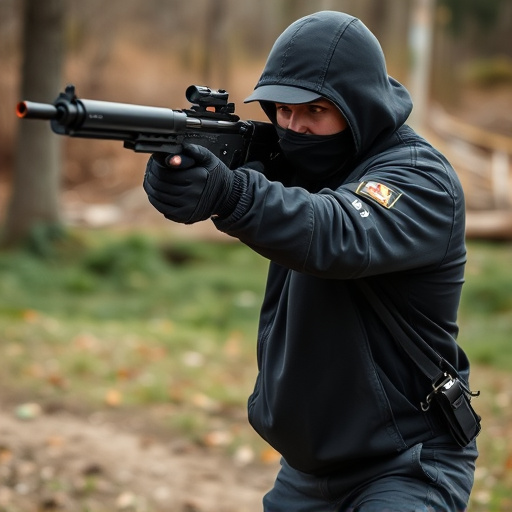
Voltage, a fundamental concept in electrical engineering, represents the difference in electric potential between two points. When it encounters materials like clothing, its behavior changes based on factors such as material conductivity and thickness. Understanding how voltage interacts with different fabrics is crucial for several reasons, especially when considering safety around devices like bulk stun guns for retail stores.
In the context of thick clothing, voltage penetration can vary significantly depending on the fabric’s composition and structure. While some materials may block or significantly reduce electrical current, others allow certain levels of voltage to pass through. This knowledge is vital for ensuring user safety when employing stun guns, as it helps determine appropriate protective gear and operational guidelines, especially in retail environments where these devices are sold or used.
Thick Clothing: A Barrier or Conductive Path?
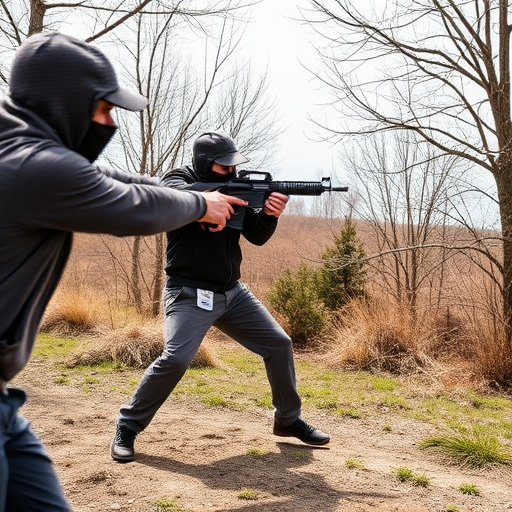
Thick clothing is often seen as a barrier that can protect against electrical shocks, particularly from stun devices. However, its effectiveness varies significantly based on material and construction. While some bulkier garments may contain conductive threads or materials, allowing electric current to pass through, others are designed with non-conductive fabrics, acting as a shield against voltage penetration. This is especially relevant when considering the market for bulk stun guns in retail stores, where customers should be aware of how different clothing types can interact with these powerful tools.
The ability of thick clothing to either block or conduct electric current depends on factors like thread composition, fabric density, and the presence of metal elements. For instance, while a heavy-duty denim jacket might provide substantial protection against direct contact shocks, it could still permit voltage to pass through if a stun gun’s probe makes contact with underlying layers, posing potential risks to users or bystanders. Thus, understanding these dynamics is crucial for anyone purchasing or using bulk stun guns in retail stores, ensuring both safety and efficacy.
The Science Behind Penetration: Materials and Factors
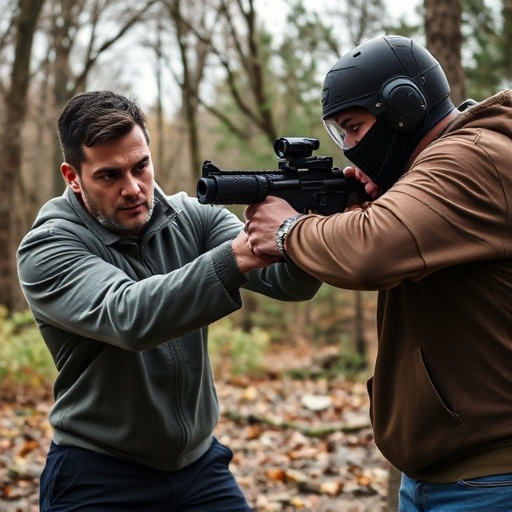
The science behind voltage penetration through clothing involves a complex interplay of materials and factors. When it comes to protecting individuals from electrical hazards, understanding these variables is crucial. Bulk stun guns for retail stores, for instance, are designed to penetrate various fabrics to ensure effectiveness. The type of fabric plays a significant role; thicker, more conductive materials like cotton or leather can slow down current flow, while thinner, less conductive layers might allow electricity to pass through more readily.
Other factors include the voltage level and the specific electrical current type. Higher voltages generally penetrate better, but the overall effect depends on the material’s resistance and thickness. In the case of stun guns, their ability to disrupt muscular control is directly linked to successful current transmission through clothing. This intricate dance of physics and materials science underscores the importance of considering not just the protection offered by clothing, but also the capabilities of modern protective devices like bulk stun guns designed for retail stores.
Bulk Stun Guns: Design and Efficiency
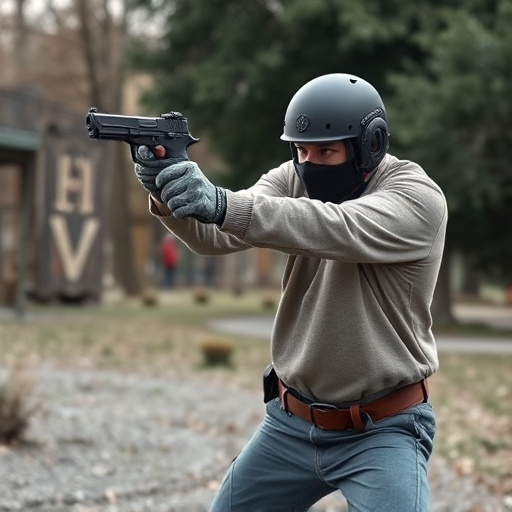
Bulk stun guns, designed for retail store security, offer a potent solution for deterring potential threats. These devices are engineered to penetrate thick clothing and deliver a strong electrical shock, temporarily incapacitating the wearer. Their efficiency lies in the combination of high voltage and advanced design features like durable construction and ergonomic grip, ensuring a reliable response in various situations.
When selecting bulk stun guns for retail stores, it’s crucial to consider factors such as energy output (measured in joules), range, and charging capabilities. Modern models often incorporate LED lights and alarms for enhanced visibility and warning effects, making them not just powerful tools but also strategic additions to loss prevention strategies.
Retail Store Considerations for Safety and Compliance
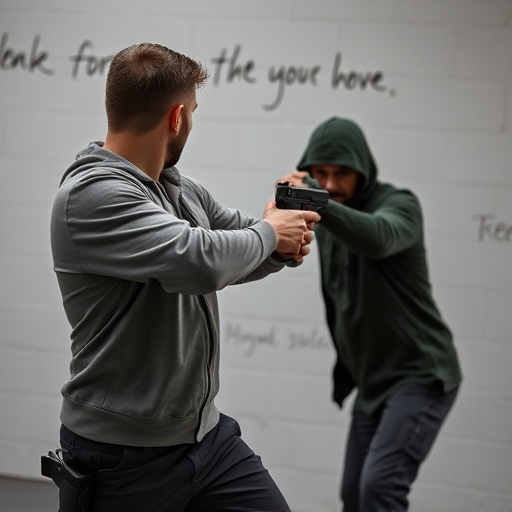
Retail stores, especially those selling outdoor gear or self-defense items, need to be mindful of safety regulations and customer well-being when it comes to displaying and selling bulk stun guns. Given their potential impact, proper placement and restrictions are essential. Stores should ensure these devices are kept in locked display cases or secure areas, with staff training on their safe handling and usage.
Compliance with local laws regarding stun guns is crucial for any retail outlet. This includes understanding the age restrictions, permitted display locations, and any required permits. By adhering to these guidelines, retailers can guarantee a safe shopping environment while offering customers effective personal protection options. Additionally, educating staff about the devices’ limitations and promoting responsible use will foster customer trust.
Voltage penetration through thick clothing is a complex phenomenon, with factors like material composition and voltage level playing significant roles. As discussed, while thick fabrics can act as barriers, certain materials and conditions allow electrical current to pass through. This understanding is crucial for retailers considering the implementation of bulk stun guns in stores, ensuring both safety and compliance with relevant regulations. By staying informed about these factors, retail store owners can make informed decisions regarding their security measures, particularly when it comes to bulk stun guns for retail stores.
